External Parts Of a Car
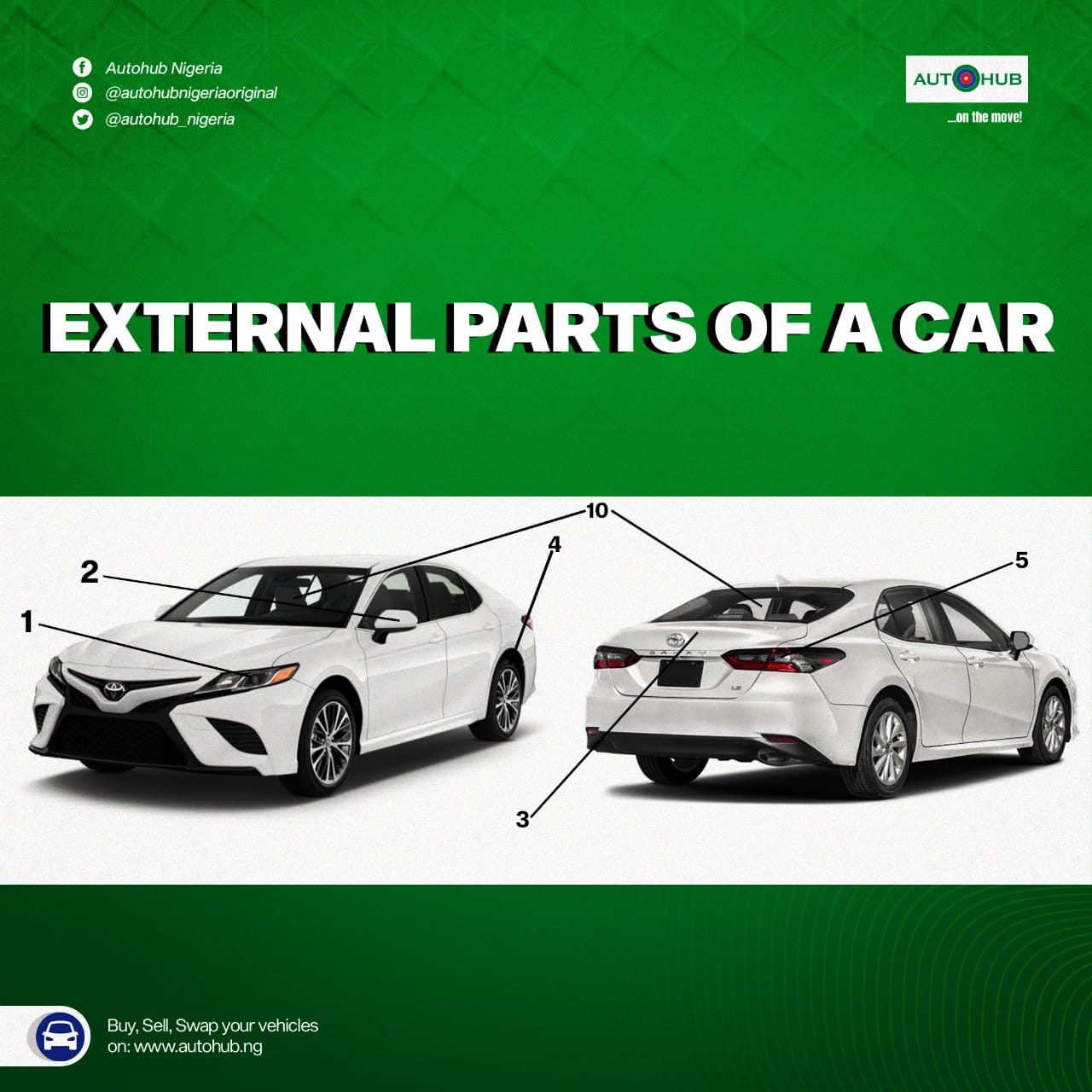
As we all know, there are different parts that make up a car but we’ll only be looking at just the external parts in this article. They are:
1. Headlights
Headlights are an important part of a car, often referred to as “headlamps” as well – are situated at the front sides of a car and aids the driver’s visibility by eliminating the darkness in front. Headlights of a vehicle produce different types of lights including – full beam light, dipped light, fog light, indicator, hazard warning light, etc.
Generally, headlights are powered by the battery of the vehicle to light up the way and show you the road properly. Halogen, Xenon and LED, are some main types of headlamps which are being used nowadays and sometimes they even add to the beauty of the car by way of aesthetically pleasing DRLs (Daytime Running Lights) designs cum fancy LED displays upon start-up and or switch-off.
2. Mirrors
A car comes with three mirrors which help you to watch your back – a rearview mirror and two side/wing mirrors. The rearview mirror is a flat mirror inside the car. It shows you what’s happening behind you. Due to improvements in technology some rearview mirrors can calculate the distance between the back of the vehicle and other vehicles or objects behind.
As it is a flat mirror, it shows the actual size and distance of the vehicles behind. Two side/wing mirrors are situated on the two sides of a car. These are convex mirrors to ensure that you catch a wider vision. Also, these mirrors show the vehicles further than where they are. They have a short coming though as there are “blind spots” which are positions around the side of the car where an object or a person might not be seen due to the angle it/he or she is in. That’s why it’s often advisable to always ensure you can see YOUR OWN VEHICLE in full-view on either one of the wing-mirror of a trailer/large truck when overtaking. Albeit advances in technology have helped reduce its effect with Blind-Spot Monitoring Technology where either a red line blinks/stays on the mirror or on the dashboard to serve as a warning that something or someone is around you.
3. Boot (Trunk)
This is the main place where you store your belongings which you are carrying with you. The cover that allows or denies access to the trunk is called a lid. In most cases, the boot (trunk) is the only storage area of your car which is designed to store items or bags and luggage.
Generally, a car’s boot is situated at the back of it. In some vehicles where the engine is situated at the rear (middle), you’ll find boots in both the front and inside, or behind the seats in some instances. And in the case of an EV (Electric Vehicle) where a conventional ICE (Internal Combustion Engine) is non-existent such as the Tesla Model X – there are “trunk spaces” both in the front, and in the rear (space jus boku, e be lyk e be…*winks) because the batteries which power up said EV are lined-up/embedded within its chassis underneath the vehicle thereby leaving lots of room elsewhere.
4. Wheels
Wheels are the parts of the car which help it to move either forwards or backwards; each wheel is covered by a tyre to ensure it’s smoothly running.
A wheel has different parts – barrel, lug holes, centre cap, centre bore, centre disc, outer lip, spoke (kind of obsolete these days) and valve stem. These are the major parts of a wheel. All these together make up a wheel that functions as one.
Wheels of a car are controlled through a complex system. To understand wheels properly, you’ll have to know about a lot of things especially wheel size measurements, but these concepts might also drastically change in the future as discussed here.
5. Tail light (Rear Light)
Tail lights are the lights at the rear side of the car that light up when you brake (or when reversing). Thus, alerting the vehicles behind you that you are stopping or reversing. Also, it works as an indicator(s) when you are either taking a left or right turn (or at night when your headlights are turned on).
Usually, you’ll find three colours in tail lights – red to indicate braking or at night for visibility in the rear; yellow to indicate turning towards the left or right; and white to indicate that the vehicle is in reverse. Having tail light is important because if you don’t signal the vehicles behind that you’re stopping, they may end up hitting your car from the rear which might dangerously lead to whiplash.
6. Bumper
This is the part of a car which keeps your car body safe from the impact of minor bumps or collision. Bumpers are usually made up of metal, plastic or carbon fibre to absorb minor shock from low-speed crashes.
Though the main use of bumper is for avoiding physical damages to a car, it is often used to enhance the look of the car and it is also aerodynamically functional in some high-end sport cars because they are designed to manipulate air-flow – greatly reducing drag coefficient, thereby making the car go faster or to have a better grip on the road (down-force). You’ll find a lot of stylish bumpers out there in the market for this purpose. There are many types of bumpers available. Among those; step bumper, standard bumper, cowboy bumper and tube bumper are some of the common types.
7. Doors
A car door is there to let you access the car and keep you safe whilst you’re inside. Depending on the model, you’ll find 2 to 4 doors (or 2 that slide forwards & backwards in People-carriers/Mini-vans) in a car. Typically, it is hinged with the car body. In most cases, doors are opened manually, but it isn’t uncommon to see a door that can be controlled from a distance too. A car door has different parts, for example – door lock, door handle, door panel, storage compartment, etc. The window of the car is also a part of the door. You’ll find the window glass controller within the door as well.
8. Bonnet (Hood)
The Bonnet or Hood is the part of a car which allows you access to the engine of a car. Typically, it is situated in the front side of the vehicle where the engine is placed. In some old car models where engines were spotted at the rear, the bonnet was in the rear side as well. The main purpose of the bonnet is to save the engine and other related components from outside hazards like dust, rain, snow, and so on. You can easily gain access to your engine when needed by way of simply just opening up the bonnet.
9. Roof
The name says it all. The roof is the protective layer above the passenger compartment which keeps everything inside safe from external elements like wind, rain, snow, hail, sleet, sun, and others. In some cars, roofs are fixed, while others come with roofs that can be opened. Sometimes roofs come with a small window that can be opened when needed, called a sunroof. In some cases, large sections of the roof could be made out of glass called a panoramic roof – which can completely change the lighting inside the car when activated.
The car roof can be converted into an external storage as well. There are carriers (roof racks) available on the market which can be installed on the roof top to make the attachment of items such as luggage or bicycles, so much easier – hence the name “carrier”, simple (again, subtle jab at those across the Atlantic whom we’ve had to carter for all through this article)!
10. Windshield
This is the big glass in the front and at the rear, that allows the driver and front seat passenger to see the road. However, the main task of a windshield is to protect the driver (and passengers) from the explosive surge of wind created by moving swiftly forward. That’s why it is called windshield. Preceding that in like the 20s and 30s, drivers would put on a Leather Flying Helmet or Aviator Hat as it was wildly known back then – in combination with Large Goggles for protection. It was basically the same apparel worn by pilots that flew Bi-planes back in the day…
Nowadays, windshields are more than that. It is a safety component too for the driver as well as the front seat passenger. In previous days, windshields were made of a piece of glass only. But in recent times, manufacturers now use laminated glass to make the windshield so that the broken pieces of glass don’t end up harming the people inside in the unfortunate event of an accident.
Also, like with many other sectors and aspects – as technology keeps on improving so will everything else considering the “smart” windshield today in some modern cars that provide you with HUD (Heads Up Display) which could be any info that you would normally get on your gauge cluster such as the speedometer or map. Some are even touch sensitive.
Hopefully, we’ll try to catch up at some point because omo, dis pipu don leave us go abeg…
Thanks for reading and do have a safe drive out there.

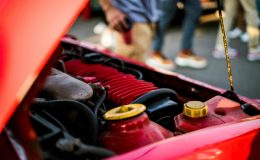
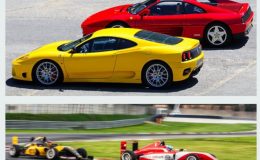


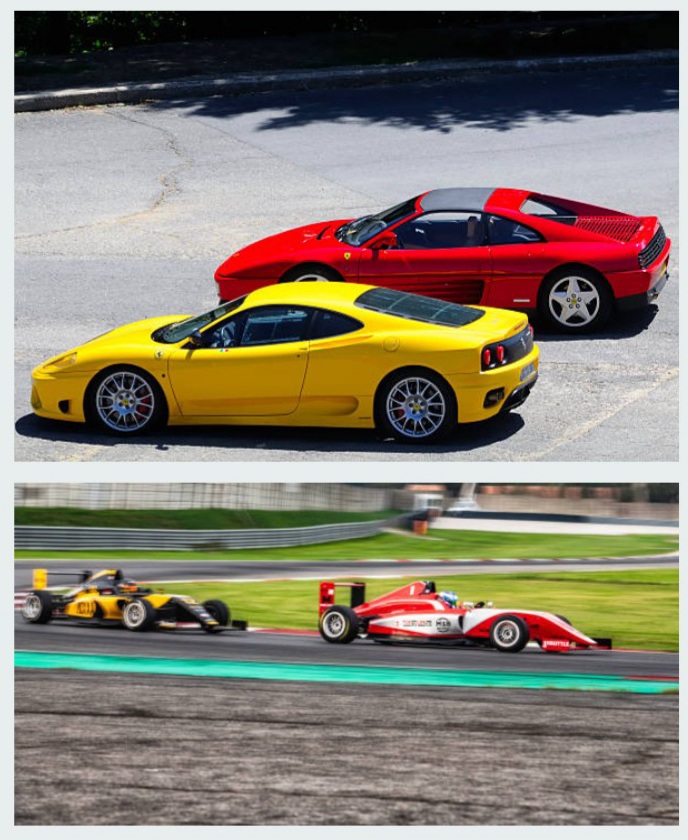
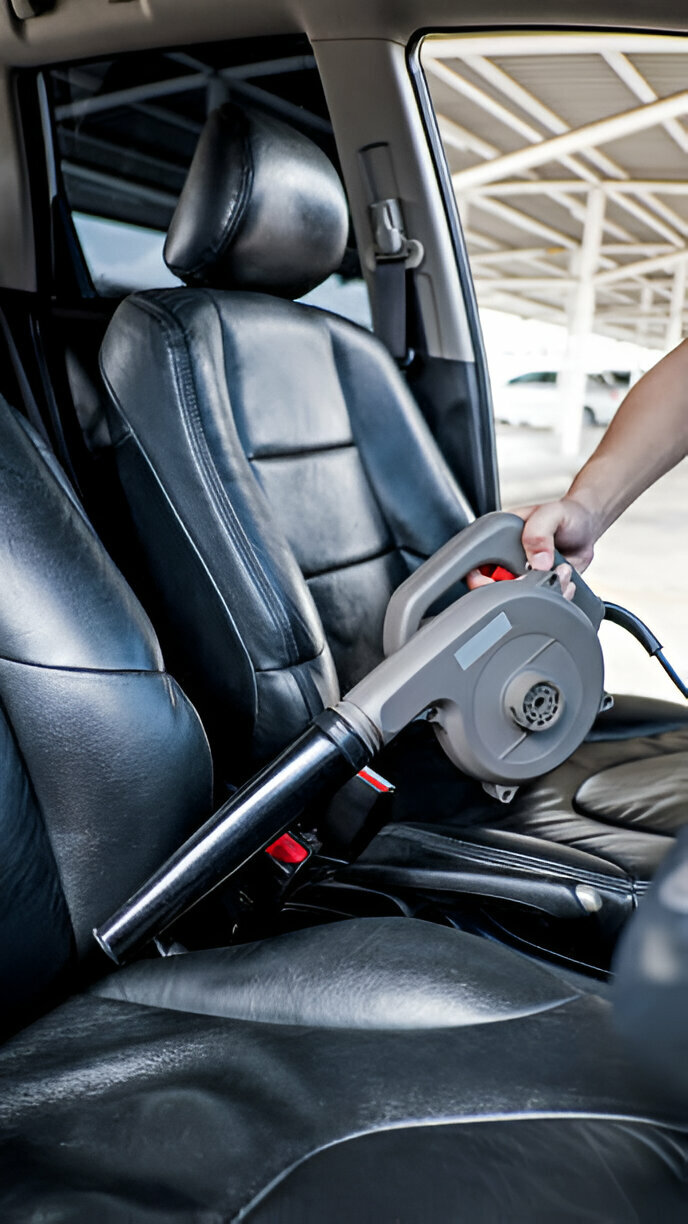
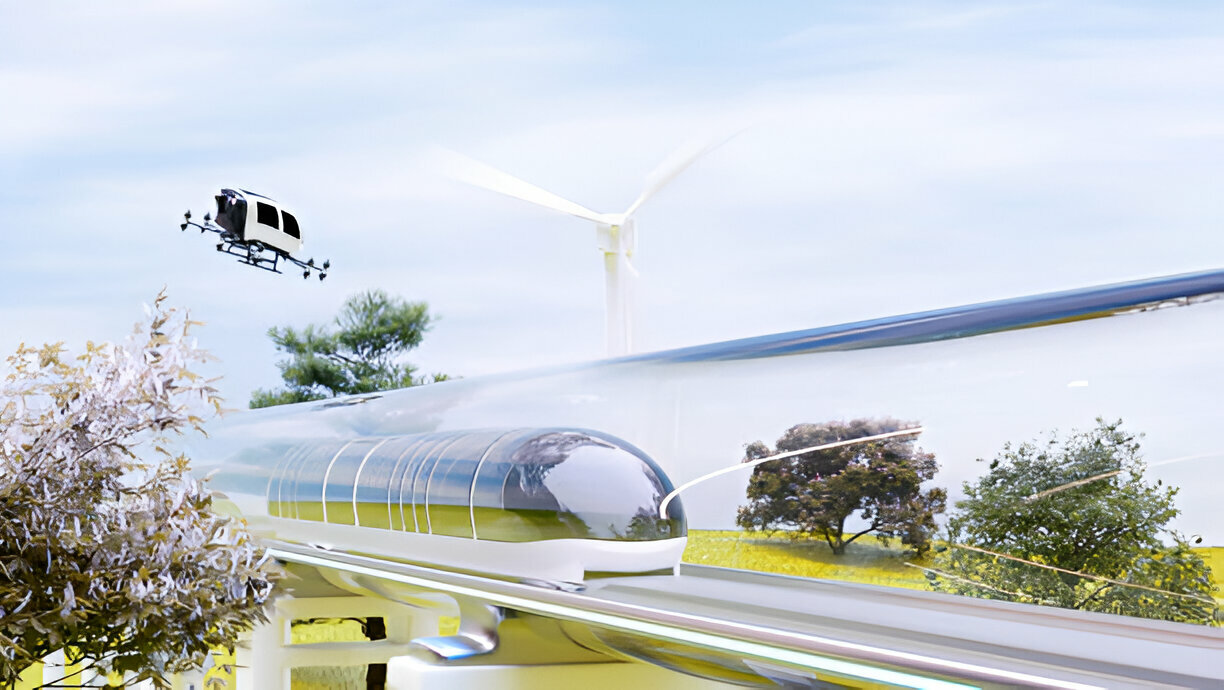



No Comments